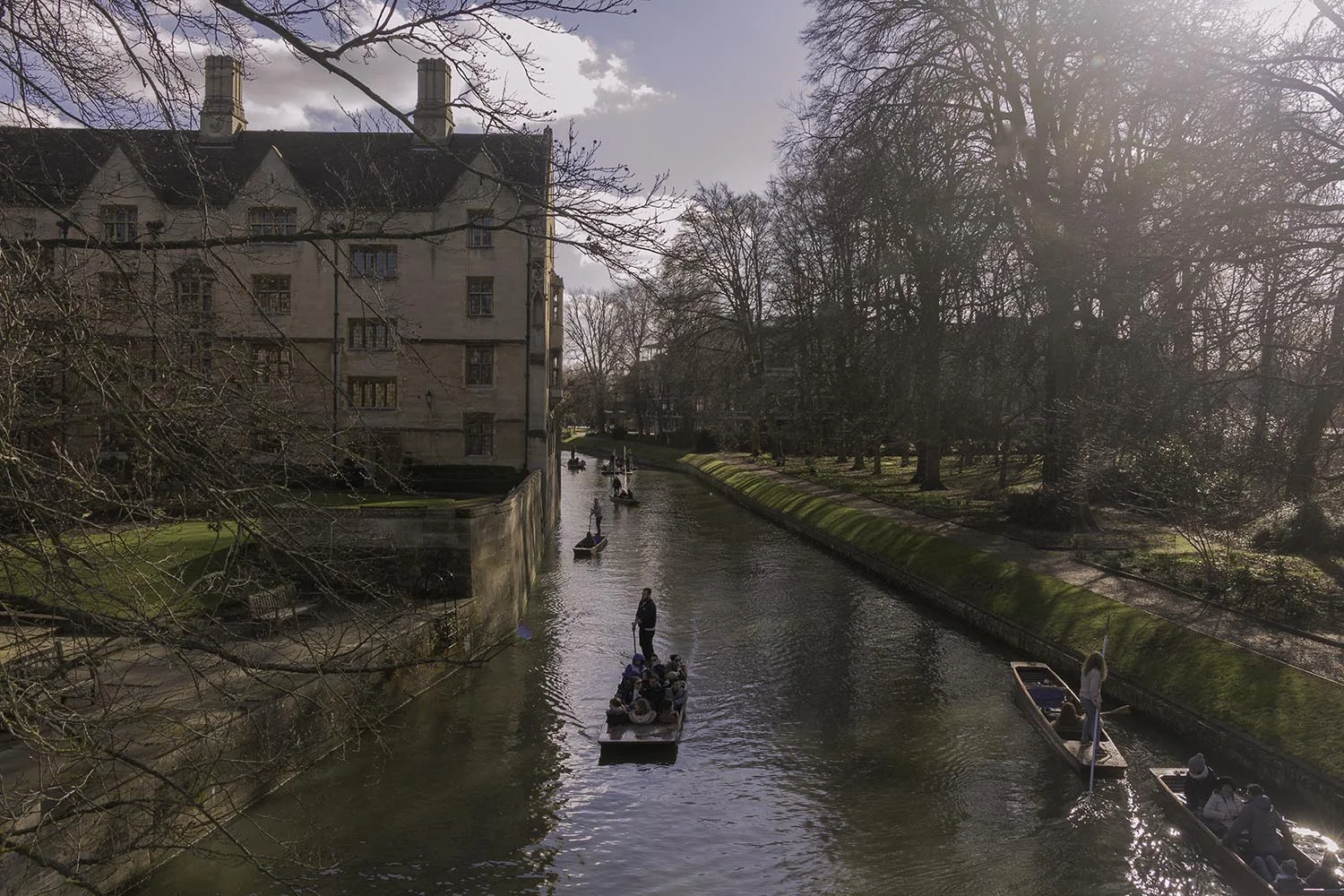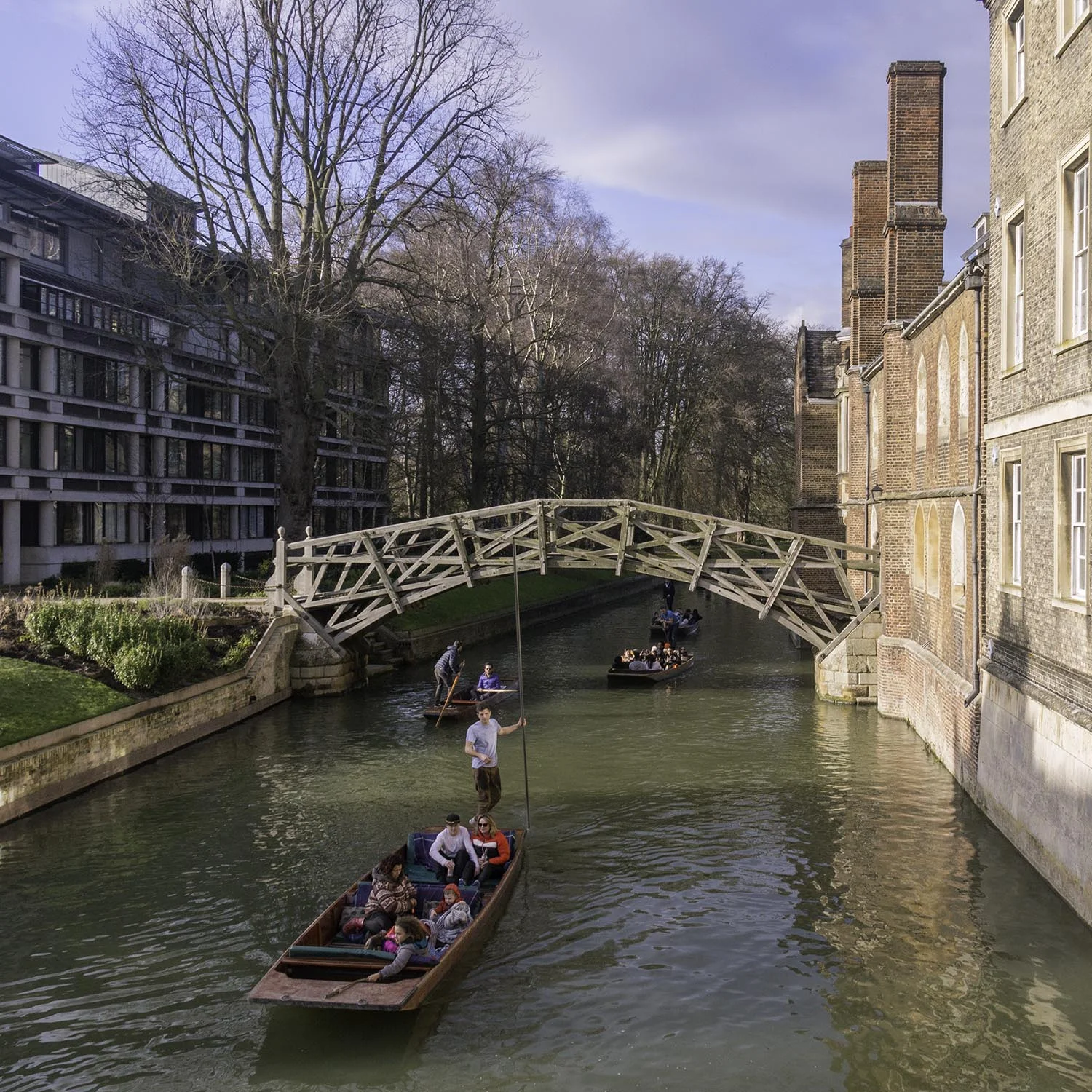8 Hours in Cambridge
Despite being one of the most well-known university cities in the world, it’s surprising to learn that the University of Cambridge’s 31 colleges and 150 departments are all scattered across the charming 13th century city. One of the most populous student cities in England, Cambridge is constantly bustling but it also offers quiet cobbled laneways, ivy draped buildings and the meandering River Cam, which give the city a distinctive air of tranquility. If you have just one day to spend in this charismatic city, be sure to visit some of these famed sites.
Lunch at The Eagle
The Eagle offers ambiance, sustenance and a huge serving of history. This 17th century pub has borne witness to some historic moments in human history and the evidence is written all across the walls - or more accurately, the ceiling. Burned into the ceiling are names, squadron numbers and drawings, historical graffiti left by R.A.F personnel during WWII. The Eagle is also famously the site where, in 1953, Francis Crick announced that he and James Watson had found "the secret of life" with their discovery of the DNA Double Helix. Just across the road from this historic site is another. St Bene't's is the oldest church in Cambridgeshire and the city’s oldest building. Most impressive is its Anglo-Saxon tower, thought to have been built between 1000 –1050 AD.
A Tour of King’s College & King’s College Chapel
Pay £9 at the tourist desk across the road and then make your way through the imposing entrance gates, which hide much of the 15th century King’s College grounds out of sight. Walk along the path lining the manicured courtyard, on which only fellows can tread, and head toward what is considered one of the greatest examples of late Gothic English architecture. Completed in 1531, the monumental King’s College Chapel is renowned for its fan vault ceiling (the largest in the world) and its stunning 26 stained glass windows. Make your way towards the furthest most point of the chapel, to view the ‘Adoration of the Magi’, a 17th century painting created by Flemish Baroque artist Peter Paul Rubens. To the side is a corridor where you can read all about the process of constructing the world’s largest fan vault ceiling.
Punting on the River Cam
In Cambridge, the cobbled paths are often swarmed by meandering visitors and the roads are occupied by streams of keen cyclists but, on a sunny day, you’ll find the River Cam is no less congested. Running through the heart of Cambridge, the River Cam is filled with punting boats carrying visitors by some of the city’s most iconic sites. Join a tour or try it for yourself. Either way, punting is considered one of the best ways to view The Backs, where the city’s greatest campuses back onto the river.
Mathematical Bridge
This wooden footbridge, also known creatively as the ‘Wooden Bridge’, connects the bank of the River Cam with Queen’s College. The origin of the bridge is often attributed to Isaac Newton and his ingenious idea to construct a wooden bridge without bolts or screws. However, this story has no truth to it — not least of all because Isaac Newton died 22 years before its construction. The bridge was actually designed by architect William Etheridge and built by James Essex in 1749 and is, in fact, securely fastened with bolts. While the bridge has been rebuilt twice, it has retained its original design. Although arched in appearance, the bridge is created entirely from straight pieces of timber.
Corpus Clock
This is a uniquely modern addition to the historic centre of Cambridge. Installed in 2008, Dr John C Taylor based his Corpus Clock design on British clockmaker John Harrison’s 1722 grasshopper escapement. It is simply unlike anything you’ve ever seen before. Dominating the Corpus Clock is a giant golden monster, called a ‘Chronophage’ or ‘time-eater’, which chews away at the passing minutes on the clock’s circumference, as blue LED lights flash around the clock’s face marking the seconds. It is both a teller of time and a reminder of its unstoppable passing. Rather than the familiar chime of ringing bells, the hour is marked by the sound of rattling chains and a hammer striking a wooden coffin. A Latin inscription beneath the clock states “mundus transit et concupiscentia eius”, translating roughly to, “the world and its desires pass away”. Haunting.
Trinity College
Founded in 1546 (more than 100 years after King’s College), Trinity College is the largest college in Cambridge or Oxford, and arguably the most attractive. Marking the entrance to the campus is The Great Gate. Guarding the gateway into the college is a statue of its founder, Henry VIII. A golden crown adorns his head and he carries a golden orb in his left hand, while his right hand inexplicably grasps a wooden table leg. The original sword that he once held is long gone and while many myths circulate, the truth behind its mysterious disappearance remains unknown. Through the Great Gate is the enormous and immaculately manicured Great Court. It is around this court that the Great Court Run takes place, where students try to complete the 400m race around the court before the college’s clock strikes 12 noon. Sitting just outside The Great Gate is a commemorative apple tree — a tribute to Cambridge’s own Isaac Newton and the beloved myth behind his historic discovery of the concept of gravity.
Drinks at The Free Press
In Cambridge, the temperature is generally a few degrees cooler than London and, when night falls, the chill really sets in. It’s when this happens that the bespoke G&Ts and the toasty fireplace at The Free Press call your name. This century old public house is within walking distance of the historic centre of Cambridge and offers a variety of board games, traditional British pub fare and a cosy atmosphere — the perfect way to end a day in Cambridge.
Planning your day trip to Cambridge
You can take a train from London Liverpool Street Station or Kings Cross. The journey takes approximately 90 minutes.
Free two-hour walking tours leave from 11 Kings Parade at 11am and 2pm daily.
If you're keen to have lunch or dinner at The Eagle, it's worth booking a table as the place fills up.
Day trips from London
When it comes to taking day trips from London, the options are limitless. For a truly mesmerising and relaxing day break, make sure you spend some time in Bath, England.









